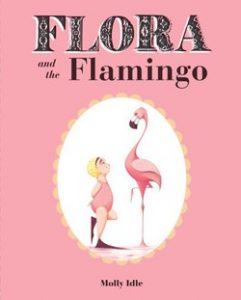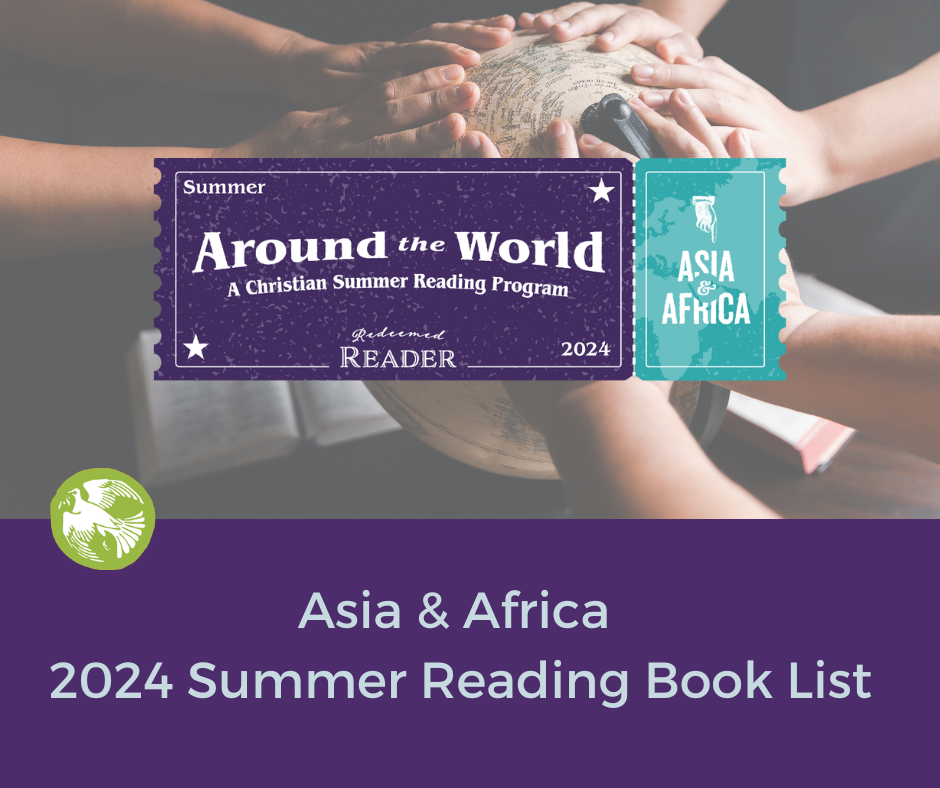For our purposes, wordless books are either entirely wordless or have very little text. A classic example is Peter Spier’s Noah’s Ark which begins with a centuries-old poem on page 1, and then proceeds with no further text. Mercer Mayer’s Four Frogs in a Box series is another absolute must in anyone’s wordless book education.
Word v. Image (in brief)
While it is true that we Christians must be able to correctly read and handle the Word of Truth, it is also true that visual art has significance and that learning to tell a story with pictorial cues develops one’s ability to handle words and narrative. Enter: the wordless book. 2013 has given us a number of notable wordless books. I’ll highlight a couple below, and Janie will look at several more next week.
How to Read a Wordless Book in 5 Steps
So, how does one read a wordless book? Before I jump into some practical ideas, let me direct you to Janie’s excellent musings over pictures and their worth in her post earlier this week (especially those last two paragraphs) and Megan’s delineation between ILLUSTRATION and illustration.
1. Choose a Great Book
“Dippy” pictures are one thing in a stilted fairy tale retelling; they are an absolute travesty in a wordless book. Choose a book with well drawn illustrations, ones that convey emotion, plot, characterization, thematic elements, and more (yes, pictures can do all of this!). Choose a book with a solid plot: a good wordless book will depict a recognizable narrative thread–and this is key. We’re not looking for a concept book with brief snapshots of a child’s toys. We’re looking for a beginning, middle, and end.
2. Read it Silently
Get a feel for the storyline, the characters, the mood of the story. Is it scary? Funny? Are the seasons changing? A character growing up? A new friendship forming? What details are clues to more meaning and depth?
3. Read It Out Loud
Go back to the beginning. This time, narrate the story. Try to put words to the emotions the characters display, the passage of time that might be evident, or the exciting events that are appearing. Don’t be surprised if you notice more information in the pictures than you did at first.
4. Let Someone Else Tell the Story
Here’s where you invite your children to exercise their little brains. Narrating a story is a wonderful way to begin learning how to craft a story, how to frame any writing assignment. The pictures will be good cues, as will your recent reading of it. But encourage your children to read it in their own words. You might be surprised at what comes out!
5. Lather, Rinse, Repeat
All great picture books invite repeated perusals of their art. Now it’s time to note some of the techniques the illustrator has used to make the story pop. You don’t have to know any fancy “art” terms for this. We’ll keep it simple. Just note one or more of the following and ask yourselves “why did the illustrator do it like this?”
- Palette: what colors does the illustrator use? Just one or two or a whole rainbow? Is there one color that is used for added punch?
- Perspective: are the pictures far away? close up? bird’s-eye view? a mix? Where is your eye drawn when you look at a page?
- Composition: what’s in the picture? what’s left out? how much white space is there?
- Details: (related to the above ideas!) what are the faces like? can you see leaves on the trees? are there recurring background details that enrich the story?
And now, an assignment!
Flora and the Flamingo by Molly Idle. Chronicle, 2013.
Molly Idle also wrote Tea Rex, another RedeemedReader favorite this year! Keep an eye on this lady. Flora and the Flamingo is a must for any with aspiring ballerinas in the home. It’s also a touching story of an unlikely friendship–told without words. Note the palette in this book. Watch how the author communicates emotion and the narrative thread in her illustrations. I should also mention: there are interactive flaps! Caldecott Honor (2014).
The Tortoise and the Hare by Jerry Pinkney. Little, Brown, 2013.
The classic fable comes to life anew in Pinkney’s skillful artwork. Note especially the endpapers (the story starts before the title page in this one and continues after “the end”), the details in the letters (their colors), and how Pinkney captures movement in this gem. Look also for his earlier Caldecott winning Lion and the Mouse which uses similar techniques and is truly stunning.
Related Link: David Weisner, a master of wordless narrative, spoke to Hornbook about “How to Read a Wordless Book.”
What are YOUR favorite wordless books? We always enjoy reader recommendations!
We’re enjoying Picture Book Month here at RedeemedReader. Tomorrow, we’ll be posting a Librarians’ List of Picture Book “Retro Reads” as well as a walk through of a picture book to illustrate what to look for when you read one. In the meantime, check out our Librarians’ List of Interesting ABC Books from last week, our Science Picture Book Authors and Illustrators of Note, Janie’s recent post on train-themed picture books, and our interview with Sherri Rinker–author of the popular Good Night, Good Night, Construction Site and Steam Train, Dream Train.
Stay Up to Date!
Get the information you need to make wise choices about books for your children and teens.
Our weekly newsletter includes our latest reviews, related links from around the web, a featured book list, book trivia, and more. We never sell your information. You may unsubscribe at any time.
Support our writers and help keep Redeemed Reader ad-free by joining the Redeemed Reader Fellowship.
Stay Up to Date!
Get the information you need to make wise choices about books for your children and teens.
Our weekly newsletter includes our latest reviews, related links from around the web, a featured book list, book trivia, and more. We never sell your information. You may unsubscribe at any time.
We'd love to hear from you!
Our comments are now limited to our members (both Silver and Golden Key). Members, you just need to log in with your normal log-in credentials!
Not a member yet? You can join the Silver Key ($2.99/month) for a free 2-week trial. Cancel at any time. Find out more about membership here.
4 Comments
Leave a Comment
You must be logged in to post a comment.






Though not a true wordless book, we loved reading our copy of “Peep” to all 3 of our kids.
We have three favorite wordless books, although two are more of “limited word” books. 🙂
Goodnight Gorilla, by Peggy Rathmann
Hug by Jez Alborough
Pancakes for Breakfast by Tomie dePaola
I really enjoyed Chalk, by Bill Thompson. Really neat story with great illustrations. I think I liked it more than my children.
Great suggestions, folks! We’re big fans of Goodnight, Gorilla, too!